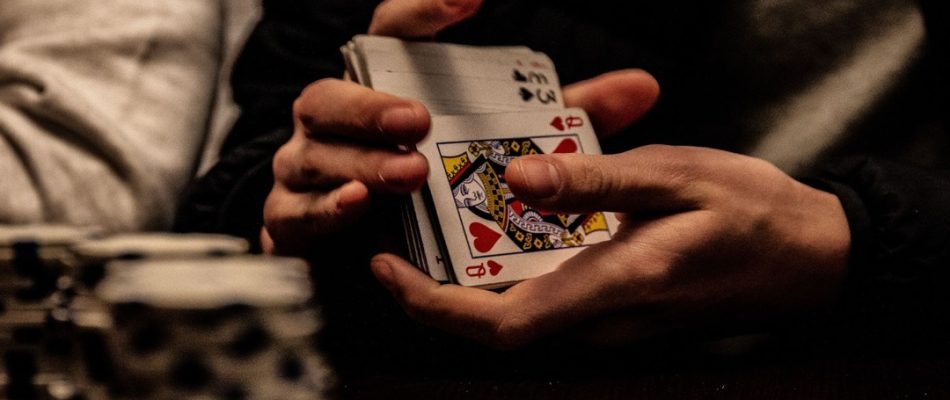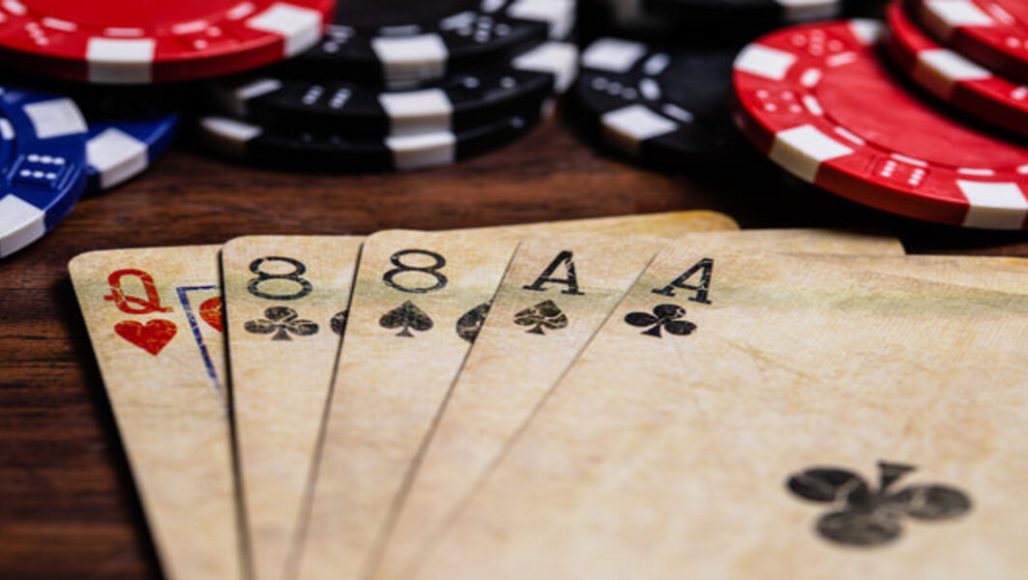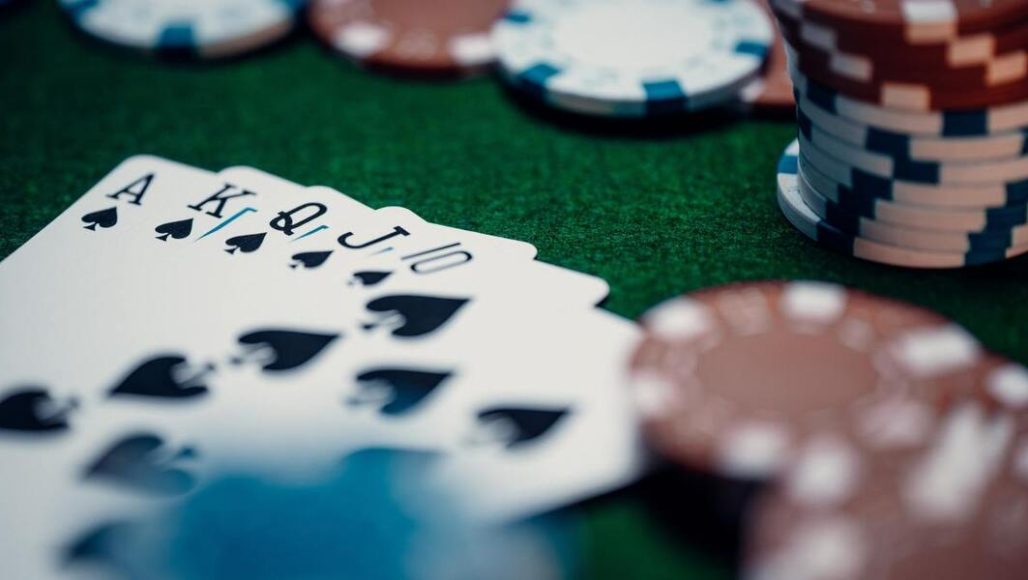Dead Man’s Hand Poker: Meaning, and Mystery Behind

Poker, a game steeped in strategy and mystery, with poker terms like bluffing, pot odds, and bankroll management playing crucial roles, has produced countless legendary hands, but none are as infamous as the “Dead Man’s Hand.” This iconic hand, composed of black aces and black eights, has been a topic of fascination for poker players and history enthusiasts alike. But what truly makes the Dead Man’s Hand poker so special? What is the fifth card in a Dead Man’s Hand, and why does it carry such a dark legacy? In this review, we delve deep into the mystery, history, and poker strategy behind this legendary hand, exploring key concepts like hand rankings and position play that are central to the game.
The Origins: What is the Dead Man’s Hand?
To understand the allure of the Dead Man’s Hand poker, we must travel back to the Old West, specifically to a tragic event that occurred on August 2, 1876. The scene was a saloon in Deadwood, South Dakota, a frontier town known for its lawlessness and gambling culture. James Butler Hickok, better known as “Wild Bill” Hickok, was a legendary figure of the American West, famous for his skills as a gunslinger and poker player.
On that fateful day, Hickok was playing poker when a man named Jack McCall shot him in the back of the head, killing him instantly. When Hickok’s hand was revealed, he was holding two pairs: black aces and black eights. This hand would forever be known as the “Dead Man’s Hand” due to its association with Wild Bill’s untimely demise.
The Fifth Card: A Question of Speculation

While the black aces and eights are universally agreed upon, there has long been speculation surrounding the fifth card in a Dead Man’s Hand. Historical records are murky, and there are several theories about what that mysterious fifth card might have been. Some sources claim it was the nine of diamonds, others suggest the jack of diamonds, or even the queen of clubs. Unfortunately, there is no definitive answer to the question, “What is the fifth card in a Dead Man’s Hand?”
This ambiguity has only added to the hand’s allure and mystery over the years. Much like the strategic decisions players face when managing poker blinds, the unanswered question of the fifth card keeps the Dead Man’s Hand shrouded in intrigue, with players continuing to debate its true composition to this day.
Poker Dead Man’s Hand Meaning
At first glance, the Dead Man’s Hand might seem like just another poker hand, albeit one with a tragic historical backstory. However, many players, both past and present, view the hand as an omen. Over time, it has garnered a reputation as a “cursed” or “unlucky” hand.
Interestingly, the superstition surrounding the Dead Man’s Hand has persisted despite the fact that, in pure statistical terms, two pairs of aces and eights are not a particularly bad hand in poker. In Texas Hold’em, for example, two pairs are considered a relatively strong hand. In fact, many professional poker players would welcome such a hand, especially early in a game.
According to some statistical analyses, the likelihood of being dealt two pairs of aces and eights in a typical five-card hand is approximately 0.045%, or about 1 in 2,222 hands. While these odds are relatively slim, they are certainly not impossible, which is why the Dead Man’s Hand remains a common occurrence in live poker games. Still, for many, the combination of aces and eights invokes an ominous sense of caution, thanks to its association with Wild Bill’s fate.
Dead Man’s Hand in Popular Culture: A Lasting Legacy
The legend of the Dead Man’s Hand poker has transcended the game itself, making its way into popular culture in ways both subtle and overt. Countless books, movies, and TV shows have referenced the hand, usually invoking a sense of doom or impending danger. For instance, in the classic Western film Deadwood (2004), which is set in the same town where Wild Bill Hickok met his end, the Dead Man’s Hand is heavily featured as a symbol of mortality.
Even beyond the poker table, the hand’s symbolism is widely recognized. The hand has been referenced in everything from novels to songs, reinforcing its place in the cultural lexicon. In some cases, organizations and businesses have even adopted the Dead Man’s Hand as a logo, often to evoke the rugged, untamed spirit of the Old West.
Poker Strategy: Playing the Dead Man’s Hand

From a strategic standpoint, the Dead Man’s Hand poker is neither the best nor the worst hand you can hold. As previously mentioned, two pairs is a solid starting point in many variations of poker, especially Texas Hold’em. However, much depends on how the community cards unfold and the actions of your opponents.
Here’s a quick breakdown of how to play a two-pair hand like the Dead Man’s Hand:
Pros:
- Two pairs: Aces and eights give you a good chance of having the strongest hand on the table early on.
- Potential for a full house: If you manage to draw another ace or eight from the community cards, you could improve your hand to a full house, which is an extremely strong hand in poker.
Cons:
- Vulnerability to straights or flushes: While two pairs are a good start, they are not invulnerable. Your opponents could still beat you with a straight, flush, or higher-ranking full house.
Tips for Playing:
- Play cautiously: While the Dead Man’s Hand is strong, it’s wise to play cautiously, especially if the community cards reveal the potential for a straight or flush.
- Know when to fold: If your opponents are playing aggressively and you don’t manage to improve your hand with the community cards, it might be time to fold.
- Watch your opponent’s tells: Like any good poker player, observing your opponents and their betting patterns can help you make more informed decisions when playing a two-pair hand like the Dead Man’s Hand.
Variations and Superstitions
In different poker variations, the Dead Man’s Hand poker can take on different meanings. For instance, in Omaha or Stud poker, where players are dealt more than five cards, the chances of holding the black aces and eights increase slightly, though the superstition remains the same. Some players claim that they’ve won large pots holding the Dead Man’s Hand, while others say they’ve lost more often with it.
Superstitious players might even fold the Dead Man’s Hand, fearing that holding it could lead to bad luck. This sense of caution can often play into the overall strategy, as opponents may also become wary if they suspect you’re holding the “cursed” hand.
Conclusion
The Dead Man’s Hand poker may be shrouded in superstition and historical mystery, but it continues to captivate poker players and history buffs alike. Whether you believe in the hand’s unlucky reputation or view it as just another combination of cards, there’s no denying its lasting impact on both poker strategy and popular culture.
So, the next time you’re dealt a pair of black aces and black eights, consider the history behind it. What is the fifth card in a Dead Man’s Hand? Perhaps it doesn’t matter. What matters is how you play the cards you’re dealt—a lesson that applies not just to poker, but to life itself.
FAQ
The Dead Man’s Hand refers to a specific poker hand composed of two black aces and two black eights. This hand is famously associated with the death of Wild Bill Hickok, a legendary figure of the Old West, who was shot while holding these cards during a poker game.
The hand gets its name from the death of Wild Bill Hickok, who was shot in the back while playing poker in Deadwood, South Dakota, in 1876. When his cards were revealed, he was holding two black aces and two black eights, which became known as the Dead Man’s Hand.
The fifth card in a Dead Man’s Hand remains a mystery. Various sources suggest it could have been the nine of diamonds, the jack of diamonds, or the queen of clubs, but there is no definitive answer. This uncertainty adds to the hand’s intrigue.
In poker, two pairs (such as two aces and two eights) can be a relatively strong hand, especially in games like Texas Hold’em. However, it’s not unbeatable, and the strength of the hand depends on the community cards and the actions of your opponents.
Yes, due to its association with the death of Wild Bill Hickok, some players consider the Dead Man’s Hand to be unlucky. Despite this superstition, statistically, it is no more unlucky than any other poker hand.
How often does the Dead Man’s Hand occur in poker?
Beyond poker, the Dead Man’s Hand has become a symbol of impending doom or bad luck. It’s been featured in movies, books, and TV shows, often evoking a sense of danger or mystery.
Yes, the Dead Man’s Hand can appear in other poker variations like Omaha or Stud, though the hand may be dealt more frequently in games that allow for more than five cards. The superstition surrounding the hand remains the same across different variations.